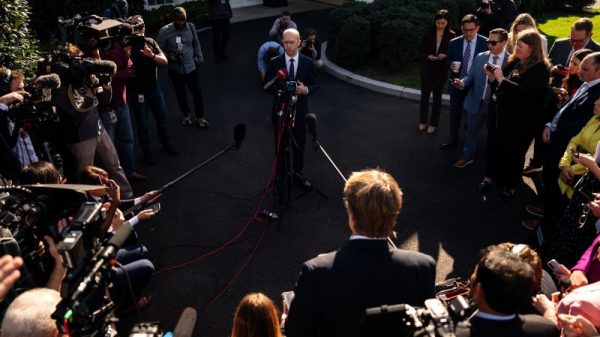China’s Chang’e-6 lunar lander successfully touched down on the far side of the moon Sunday morning Beijing time, in a significant step for the ambitious mission that could advance the country’s aspirations of putting astronauts on the moon.
The Chang’e-6 probe landed in the South Pole-Aitken Basin, where it will begin to collect samples from the lunar surface, the China National Space Administration announced.
China’s most complex robotic lunar endeavor to date, the uncrewed mission aims to return samples to Earth from the moon’s far side for the first time.
The landing marks the second time a mission has successfully reached the far side of the moon. China first completed that historic feat in 2019 with its Chang’e-4 probe.
If all goes as planned, the mission — which began on May 3 and is expected to last 53 days — could be a key milestone in China’s push to become a dominant space power.
The country’s plans include landing astronauts on the moon by 2030 and building a research base at its south pole – a region believed to contain water ice.
Sunday’s landing comes as a growing number of countries, including the United States, eye the strategic and scientific benefits of expanded lunar exploration in an increasingly competitive field.
Samples collected by the Chang’e-6 lander could provide key clues into the origin and evolution of the moon, Earth and the solar system, experts say – while the mission itself provides important data and technical practice to advance China’s lunar ambitions.
Chang’e-6 touched down within an impact crater known as the Apollo Basin, located within the sprawling, roughly 2,500-kilometer-diameter South Pole-Aitken Basin, according to Chinese state media Xinhua. It had orbited the moon for about 20 days as part of a larger probe, which is composed of four parts: an orbiter, a lander, an ascender and a re-entry module.
It is now expected to use a drill and a mechanical arm to gather up to 2 kilograms of moon dust and rocks from the basin, a crater formed some 4 billion years ago.
The probe will spend two days on the far side of the moon, and 14 hours to collect moon soil samples, Xinhua reported.
To complete its mission, the lander will need to robotically stow those samples in an ascent vehicle that made the landing with it.
The ascent vehicle will then return to lunar orbit, where it will dock with and transfer the samples to a re-entry capsule, according to mission information provided by the China National Space Administration.
The re-entry capsule and orbiter will then travel back to Earth’s orbit and separate, allowing the re-entry capsule to make its expected return later this month to the Siziwang Banner Landing Site in China’s rural Inner Mongolia region.
The technically complex mission is made more challenging due to where it is being conducted. The far side of the moon is out of range of normal communications, which means Chang’e-6 must also rely on a satellite that was launched into lunar orbit in March, the Queqiao-2.
China plans to launch two more missions in the Chang-e series as it nears its 2030 target of sending astronauts to the moon.
Multiple nations are expanding their lunar programs, with a growing focus on securing access to resources and further deep-space exploration.
Last year, India landed a spacecraft on the moon for the first time, while Russia’s first lunar landing mission in decades ended in failure when its Luna 25 probe crashed into the moon’s surface.
In January, Japan became the fifth country to land a spacecraft on the moon, though its Moon Sniper lander faced power issues due to an incorrect landing angle. The following month, IM-1, a NASA-funded mission designed by Texas-based private firm Intuitive Machines, touched down close to the south pole.
That landing – the first by a US-made spacecraft in over five decades – is among several planned commercial missions intended to explore the lunar surface before NASA attempts to return US astronauts there as soon as 2026 and build its scientific base camp.


































